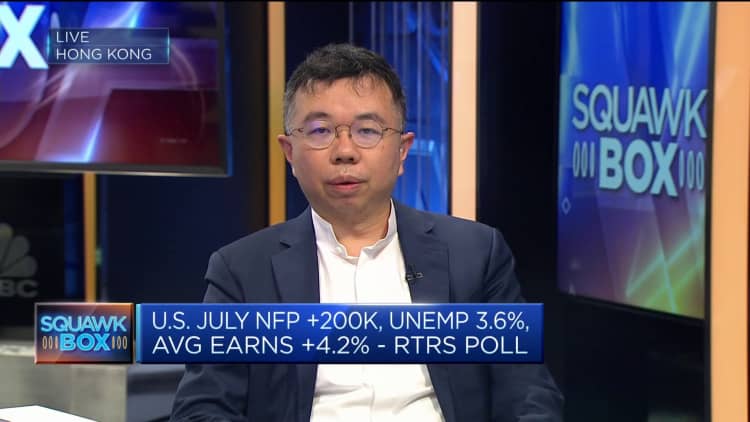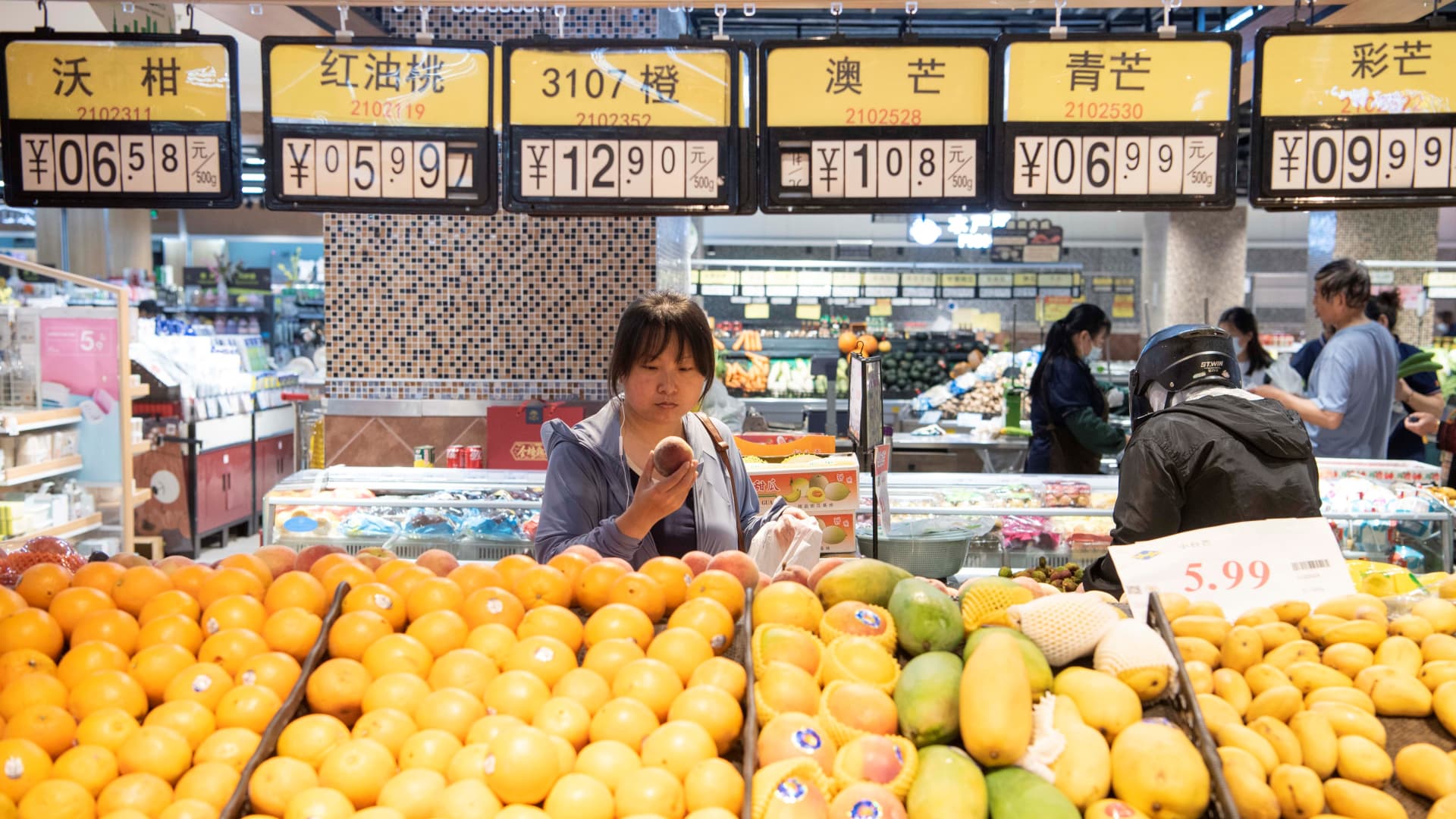Fears are growing that China’s economy is tethering on the verge of deflation after yet another slate of underwhelming economic data July 17 provided more evidence that the stall in growth momentum may turn out more severe without more meaningful policy intervention.
Xinhua News Agency | Xinhua News Agency | Getty Images
China is facing a demographic problem and needs to boost its productivity for growth, said David Mann, chief economist for Asia-Pacific, Middle East and Africa at the Mastercard Economics Institute.
“You need to see the productivity side pickup exactly because of the demographic challenge,” he told CNBC’s “Squawk Box Asia” on Monday.
“If you go back 10, 20 years in China, you had so much of growth coming purely from just more people showing up each year — that labor contribution rather than capital or productivity.”
“Now, you need the productivity,” he said, underlining Beijing has to make sure “capital is channeled” in a way that boosts productivity.
China ended its Covid-19 controls in December and the initial economic rebound has lost steam. The 6.3% economic growth in the second quarter marked a 0.8% pace of growth from the first quarter, slower than the 2.2% quarter-on-quarter pace recorded in the first three months of the year.

The massive real estate sector has struggled to recover, while exports have plunged due to falling global demand.
“The extra challenge China has though — unlike say even somewhere that has a smaller population — is about numbers,” said Mann.
“When you look at a population of around 1.4 billion people, even if the working age group is shrinking, there’s just not enough people out there to be able to practically make that happen.”
As a result, it’s crucial for Beijing to encourage private sector growth to ease the productivity pressures, he added.
Mann explained a key for the economy would be “how strong we see growth in the private sector — to be able to bring in those innovations and introduce them in a way that does keep growth a bit stronger, without needing to resort, for example, residential real estate investment, which is not as productive.”
Tame consumer recovery
China is expected to release its inflation data Wednesday, which will give further clues on the country’s recovery trajectory. Lackluster consumer demand led to no change in prices in June.
Domestic travel has been a bright spot in the recovery. Urban residents more than doubled their tourism spending in the first half of the year from a year ago to 1.98 trillion yuan ($280 billion), according to the Ministry of Culture and Tourism.

There has been a recovery, “it’s just that people — per person — are spending less,” said Mann.
“With the travel recovery domestically in China, we’ve seen volumes of people around key holidays up and matching and exceeding even 2019 levels,” he noted. “But the per person spending has not been,” leading to a slightly “more tame recovery” in consumer spending.
— CNBC’s Evelyn Cheng contributed to this report

